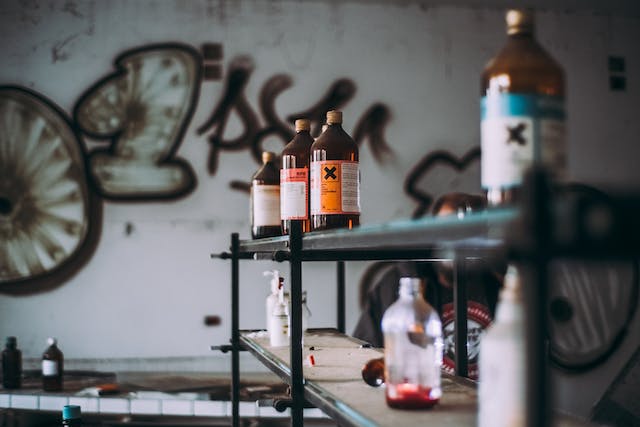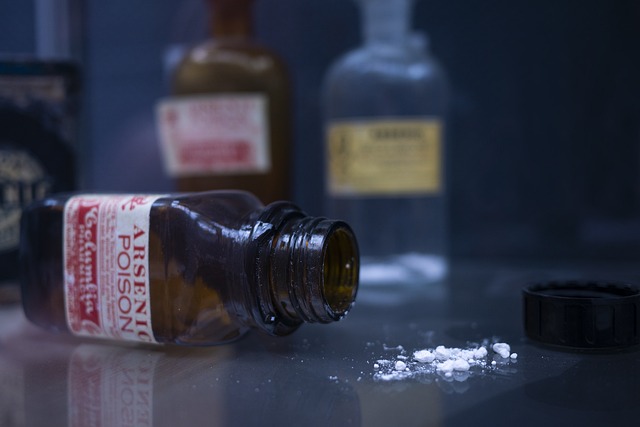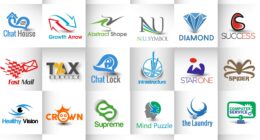Venom is injected by a bite or sting, while poison is ingested or absorbed. Venomous organisms actively deliver venom, whereas poisonous ones are harmful upon contact or consumption.
TL;DR Venom Vs. Poison
Venom is actively injected by specific organisms such as snakes, spiders, or scorpions through bites or stings. It serves as a powerful weapon used for self-defense or capturing prey. Venom tends to be produced by specialized glands and delivered through fangs, stingers, or other anatomical features.
Poison refers to toxic substances that are passively ingested or absorbed by contact with certain plants, animals, fungi, or chemicals found in our environment. Poison does not require any active delivery mechanism like fangs or stingers; its toxicity lies within its chemical composition.
What is Venom?
Venom is a toxic substance produced by certain animals, often injected into prey or enemies through bites or stings. It serves various purposes, including immobilizing prey, self-defense, or initiating digestion.
Venomous creatures, like snakes and spiders, possess specialized glands to produce venom, while delivery mechanisms, such as fangs or stingers, aid in injecting it.
The effects of venom can range from mild irritation to severe illness or death, depending on the species. While dangerous, some venoms have medical applications, contributing to the development of antivenoms and pharmaceuticals.
What is Poison?

Poison is a harmful substance that, when ingested, absorbed, or inhaled, can cause injury, illness, or death. It can be derived from plants, animals, or chemicals and disrupts normal physiological functions.
Unlike venom, which is actively injected, poison passively harms upon contact or consumption. Common sources include toxic plants, certain animals, and chemical substances.
Poisoning can result from accidental exposure, intentional ingestion, or environmental contamination. Many toxins have medical, industrial, or agricultural applications, underscoring the importance of proper handling and awareness to prevent adverse effects on humans and other organisms.
Venom Vs. Poison – Key differences
| Aspect | Venom | Poison |
|---|---|---|
| Delivery Method | Actively injected, often through bites or stings. | Passively ingested, absorbed, or inhaled. |
| Production Site | Produced in specialized glands of venomous organisms. | Can be derived from various sources, including plants, animals, or chemicals. |
| Delivery Organism | Venomous creatures actively deliver venom. | Poisonous organisms are harmful upon contact or consumption. |
| Mechanism | Typically used for prey immobilization or defense. | Causes harm upon contact or ingestion, disrupting normal physiological functions. |
| Examples | Snakes, spiders, scorpions. | Toxic plants, certain animals, chemicals. |
| Application | Venom is actively delivered through specialized structures like fangs or stingers. | Poison is often passively encountered and may be present in various forms. |
| Medical Use | Some venomous species have medical applications, contributing to antivenoms and pharmaceuticals. | Toxins from poisonous sources may have limited medical applications but are generally not used for therapeutic purposes. |
Venom Vs. Poison – Effects on Humans
Venom
- Delivery Method: Actively injected through bites or stings.
- Effects on Humans: Varies depending on the specific venom and its components. Effects can range from mild irritation to severe illness or death.
- First Aid: Seek immediate medical attention. Antivenom may be administered for certain venomous bites or stings.
- Common Examples: Snakes, spiders, scorpions.
- Prevention: Use caution in areas with venomous creatures. Wear protective clothing if necessary.
Poison
- Delivery Method: Passively ingested, absorbed, or inhaled.
- Effects on Humans: Effects depend on the specific poison and its toxicity. Can range from mild symptoms to severe illness or death.
- First Aid: Seek medical attention and follow appropriate first aid measures, such as induced vomiting or activated charcoal, depending on the type of poisoning.
- Common Examples: Toxic plants, certain animals, chemicals.
- Prevention: Exercise caution around known poisonous substances. Practice safe handling and storage.
Understanding these distinctions is crucial for appropriate responses, first aid, and preventive measures in cases of venomous encounters or poison exposure.
Image Credits
Featured Image By – Gutife from Pixabay
Image 1 By – Photo by Davide Baraldi








